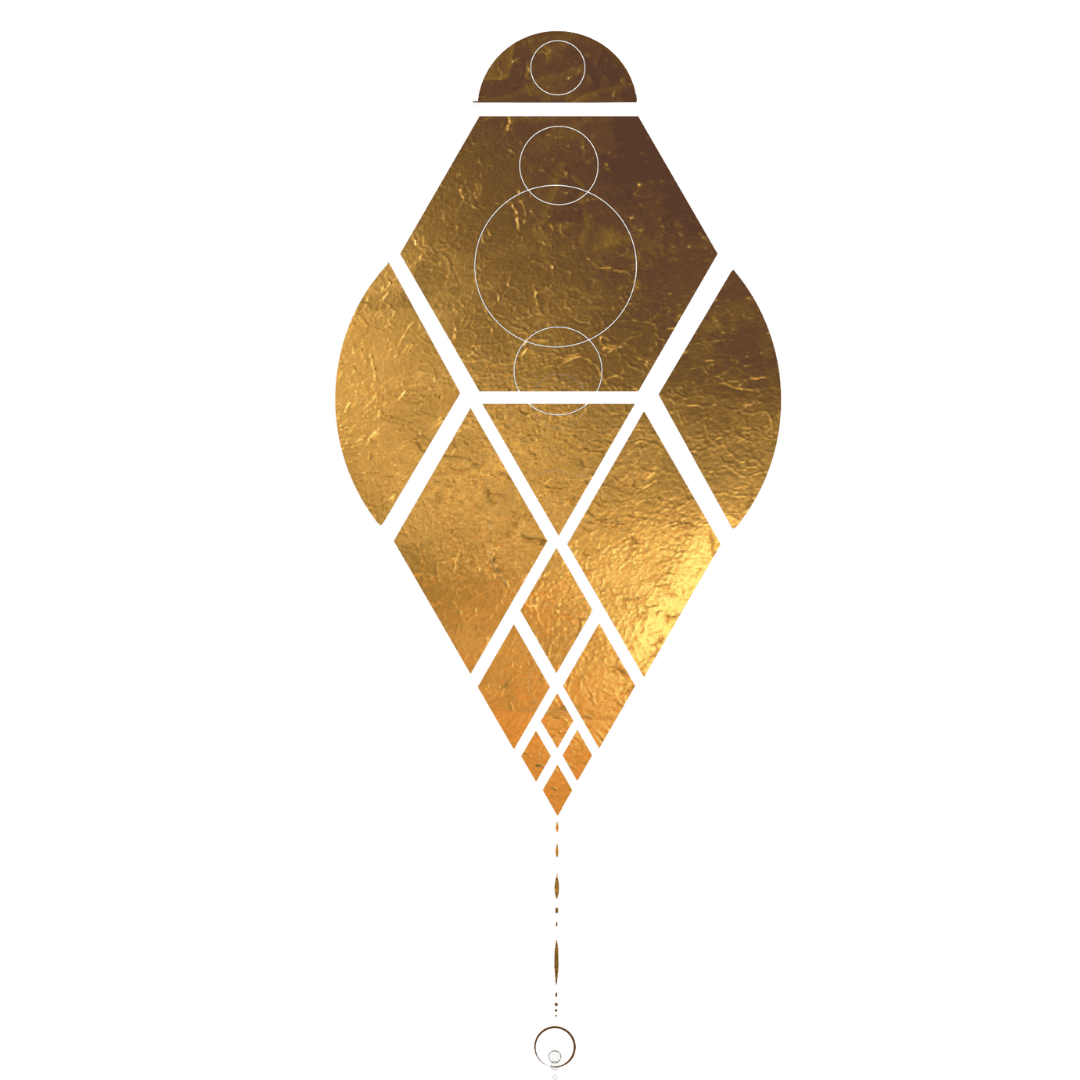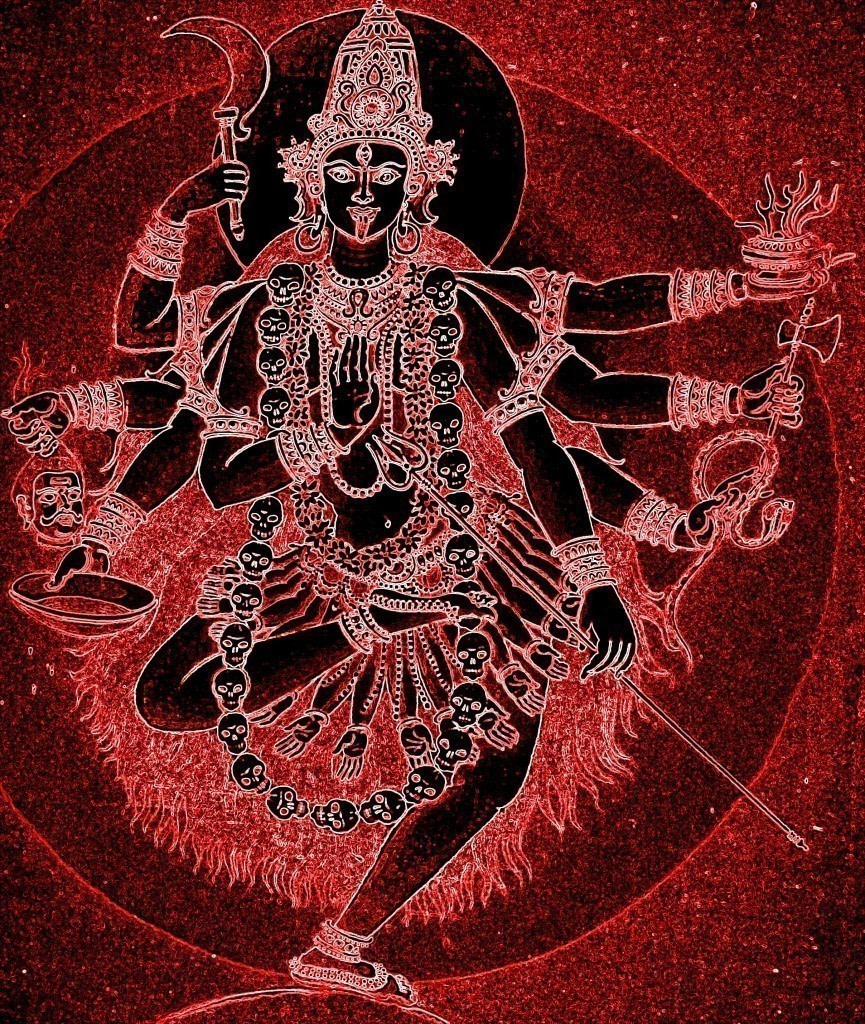Kali Maa is our Great Mother, the Pregnant Nothingness who existed before our world emerged. She dissolves worlds and universes in her Great Womb — and births them anew.
Kali is a tantric goddess. She weaves with both darkness and light. She walks between the worlds. Her love is fierce and real, she welcomes you as you are, but she never leaves you the same.
Kali is our Mother.
Out of all the Divine Feminine personifications, Hindu goddess Kali has had the most profound impact on my life. I got to know her, in the strange and spiraling ways of the Divine Feminine, through the Black Madonnas of France and Italy.
Before I established my own relationship with Kali, I had known two main Western versions of her.
One was the Christian version, which basically presented goddess Kali as a blood-thirsty demon whom uncivilized people had the misfortune of worshipping.
The other version, the New Age Kali, wasn’t much better.
From New Age Kali to the Black Madonna
The New Age Kali was someone you could turn to, or “embody,” in order to channel anger.
In this version, Kali is angry and destroys everything in her way. Consequently, you can use her when you feel disempowered and need to get your anger out. Fair enough. It’s important to connect with anger.
Some spiritual teachers suggested Kali for protection against scheming neighbors or abusive boyfriends, making her comically similar to a Catholic saint (albeit a destructive one).
Anger and unbounded destruction is indeed a part of Kali’s story in the Hindu tradition. But the archetype and the structural signature of the goddess is much older than the story itself.
Problem is, it’s quite difficult to establish a relationship with a caricature. I didn’t know Kali.
In 2018, I met the Black Madonnas of Moiano and Montevergine in Southern Italy. This was a deep initiation into the Dark Feminine.
The Dark Feminine is not evil or “dark” in the sense of “bad, low-vibrational, yuk!” The seeds of all life are planted in the dark (Seriously, try growing your garden by planting the seeds into thin air and wishing them love and light 24/7!)
The Queen of the Underworld who is the same person as the Queen of Heaven.
But our archetypes of Divine Mother, and Divine Feminine in general, are quite distorted.
This distortion is, incidentally, the reason why many women struggle with power and abundance. We have either Virgin Mary to look up to, pure and chaste and never touched by a man — or Lilith, the queen of all demons of hell. We can never be both, we can never be real.
Remember all those fairy tales with an evil stepmother? The good mother is always dead or away, and the evil stepmother is trying to destroy a beautiful young girl. But it is the “evil” stepmother who initiates the girl into adulthood.
What if the stepmother is just another face of the mother? What if Lillith and Eve both live within you? Surely you know how to both create and destroy — our wombs do that every month! We know how to bless and to curse with the same breath, we have been prostitutes and nuns and everything in between in our journey.
Kali, the Mother
When mother Teresa came to Kalighat to establish her temple for the dying, the local devotees came to believe that she was an incarnation of Kali.
Yes, Kali herself.
Kali as Divine Mother is the Queen of the dead and the dying, she is the gateway into the underworld and a portal into another life. She is also a healer and a comforter. She is a destroyer and a birther of worlds in one.
Mother Teresa was familiar with the archetype from her own Catholic tradition. Many churches have a Black Madonna presiding over the remains of the dead, a carryover from pre-Christian times when the Feminine was the ruler of the Earth, including both death and the harvest (all about planting seeds again!).
When someone asked mother Theresa why she had both Kali and Mother Mary on her altar, but no Jesus. she said that Kali the power and Mary the love were the outward manifestation, whereas Jesus was always in her heart.
Real Kali is not a nice little Mommy who is all “love and light” and cookies. Kali is dark and fertile, like volcanic earth, where the magma that once destroyed everything in its path has become the source of new life.
Kali as Divine Mother is real. Kali Maa is dark as the earth herself.
Like a poppy seed that falls and dies, and then is born again to new life. To bloom into a poppy plant, a delicate flower whose essence has comforted the suffering of millions — and destroyed the lives and dreams of millions more.
Kali is an initiatrix. She knows grief and pain, just as she knows the ecstasy of sensual pleasure and the abandon of love. Love, too, is death. Love, too, is life. Kali is love.
In the poetry of Ramprasad, Kali comes through as the Lover and the Beloved, the Creatrix that is beyond good and evil, and as close to the Unmanifest in her pregnant nothingness as we allow her to be:
Enchantress of hearts
Fresh as a lotus
Her movements are those of a swan…
At once form and formless,
Kali is the letter K,
Foundation of all that is.
She is pleasure and liberation,
Supreme abode and the one and only Name,
Beyond that what else is there?
In the heart where Kali watches
Run the waters of the Ganges
And when the hour comes
That heart which has become Eternal
Laughs at death!


